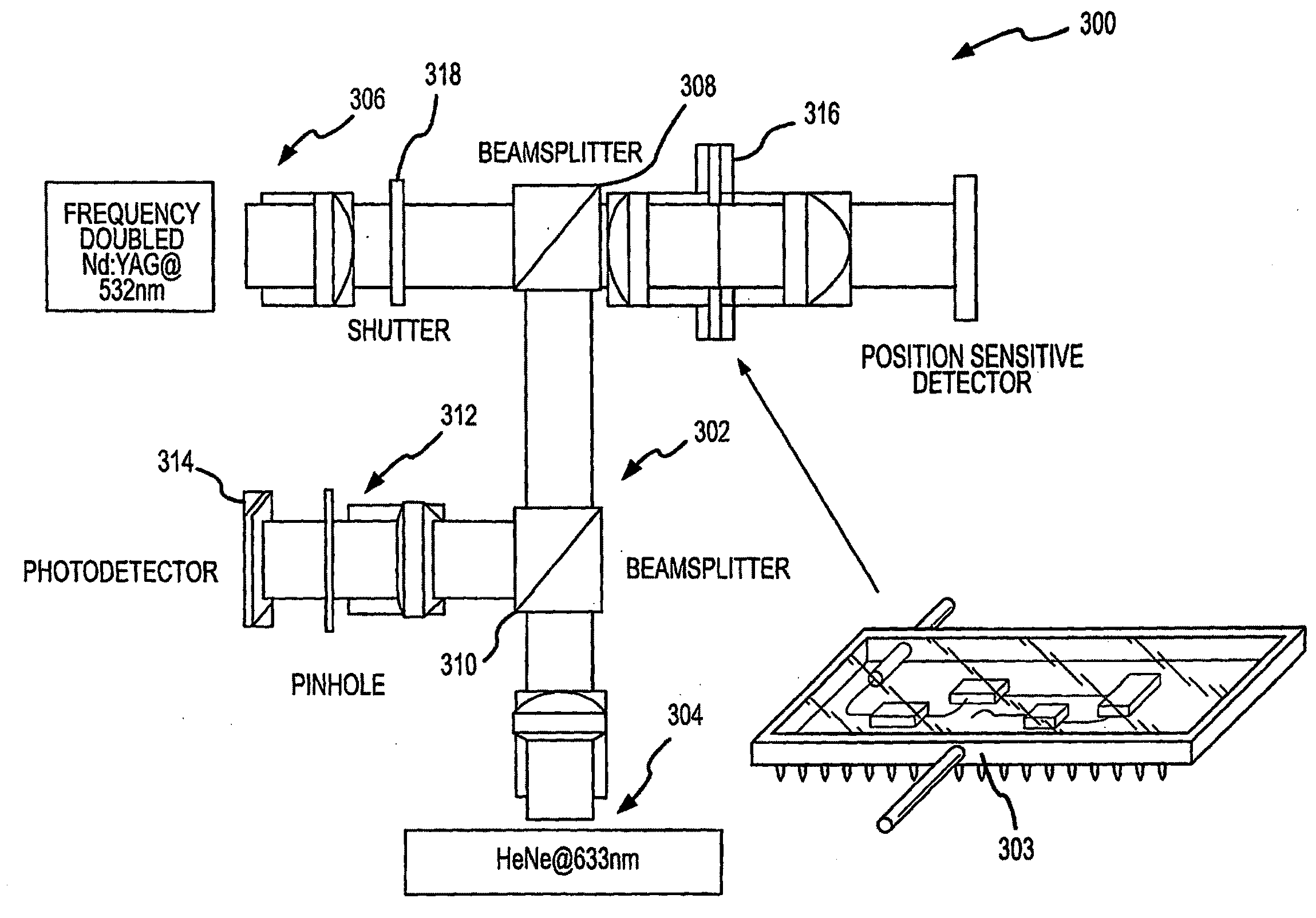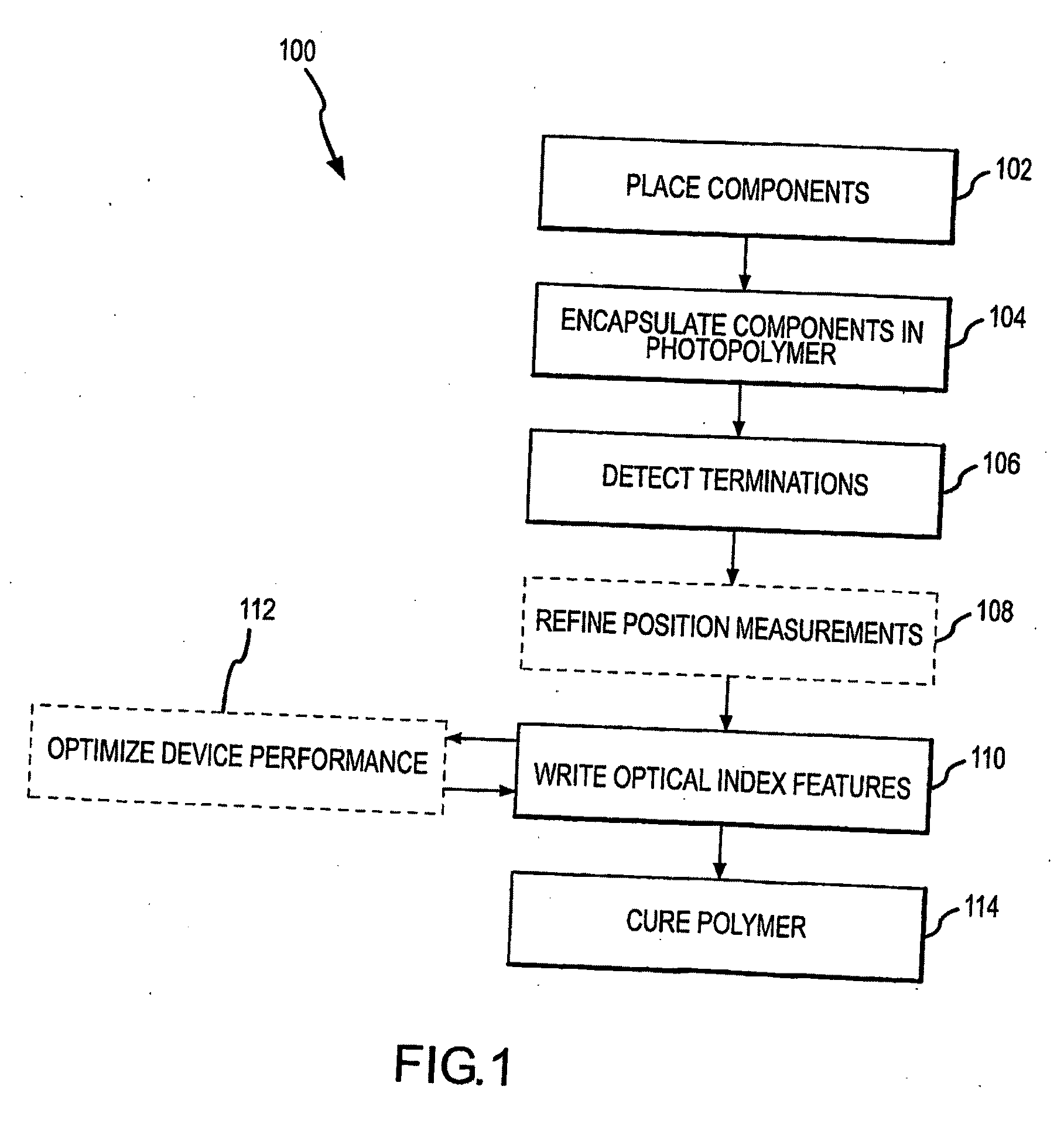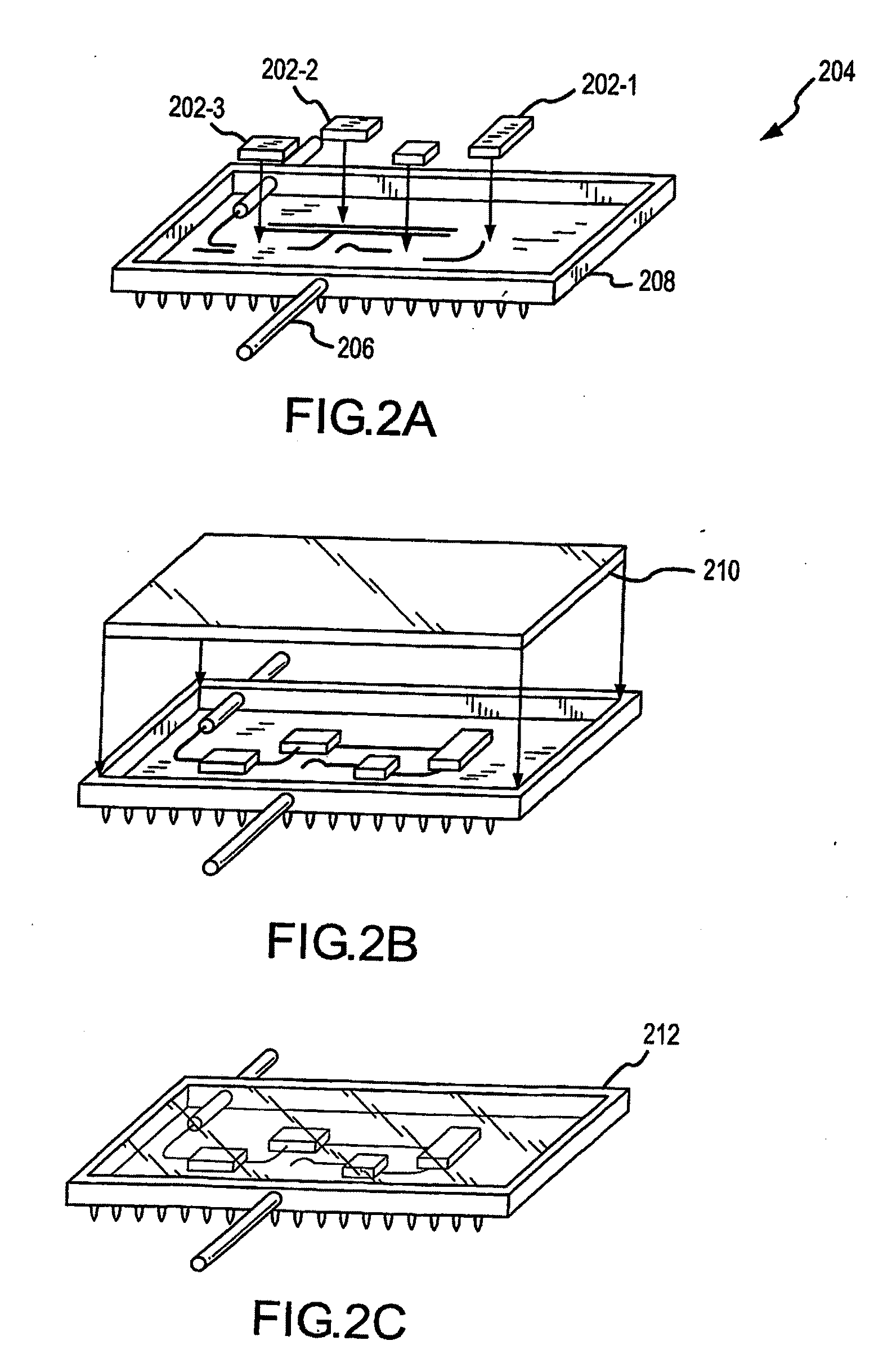Three-Dimensional Direct-Write Lithography
a lithography and three-dimensional technology, applied in the field of three-dimensional direct-write lithography, can solve the problems of 3d structure, large, expensive and limited complexity, and implementation devices encapsulated by a single material system,
- Summary
- Abstract
- Description
- Claims
- Application Information
AI Technical Summary
Benefits of technology
Problems solved by technology
Method used
Image
Examples
embodiment
Exemplary Method Embodiment
[0029]Having described embodiments of the present invention generally, attention is directed to FIG. 1, which illustrates an exemplary method 100 according to embodiments of the invention. The method relates to direct write lithography into a diffusion-mediated photopolymer. Those skilled in the art will appreciate that this method is not limiting. There are other methods of creating local, permanent index change in polymers, such as two-photon initiation. Those skilled in the art also will appreciate that the method 100 is merely exemplary of a number of methods according to the present invention. For example, the foregoing description is specifically directed toward forming a waveguide connecting optical components, although this is not to be considered limiting. Further, those skilled in the art also will appreciate that other methods according to other embodiments may include more, fewer, or different steps than those illustrated herein. Further still,...
PUM
| Property | Measurement | Unit |
|---|---|---|
| output power | aaaaa | aaaaa |
| speed | aaaaa | aaaaa |
| speeds | aaaaa | aaaaa |
Abstract
Description
Claims
Application Information
 Login to View More
Login to View More - R&D
- Intellectual Property
- Life Sciences
- Materials
- Tech Scout
- Unparalleled Data Quality
- Higher Quality Content
- 60% Fewer Hallucinations
Browse by: Latest US Patents, China's latest patents, Technical Efficacy Thesaurus, Application Domain, Technology Topic, Popular Technical Reports.
© 2025 PatSnap. All rights reserved.Legal|Privacy policy|Modern Slavery Act Transparency Statement|Sitemap|About US| Contact US: help@patsnap.com



